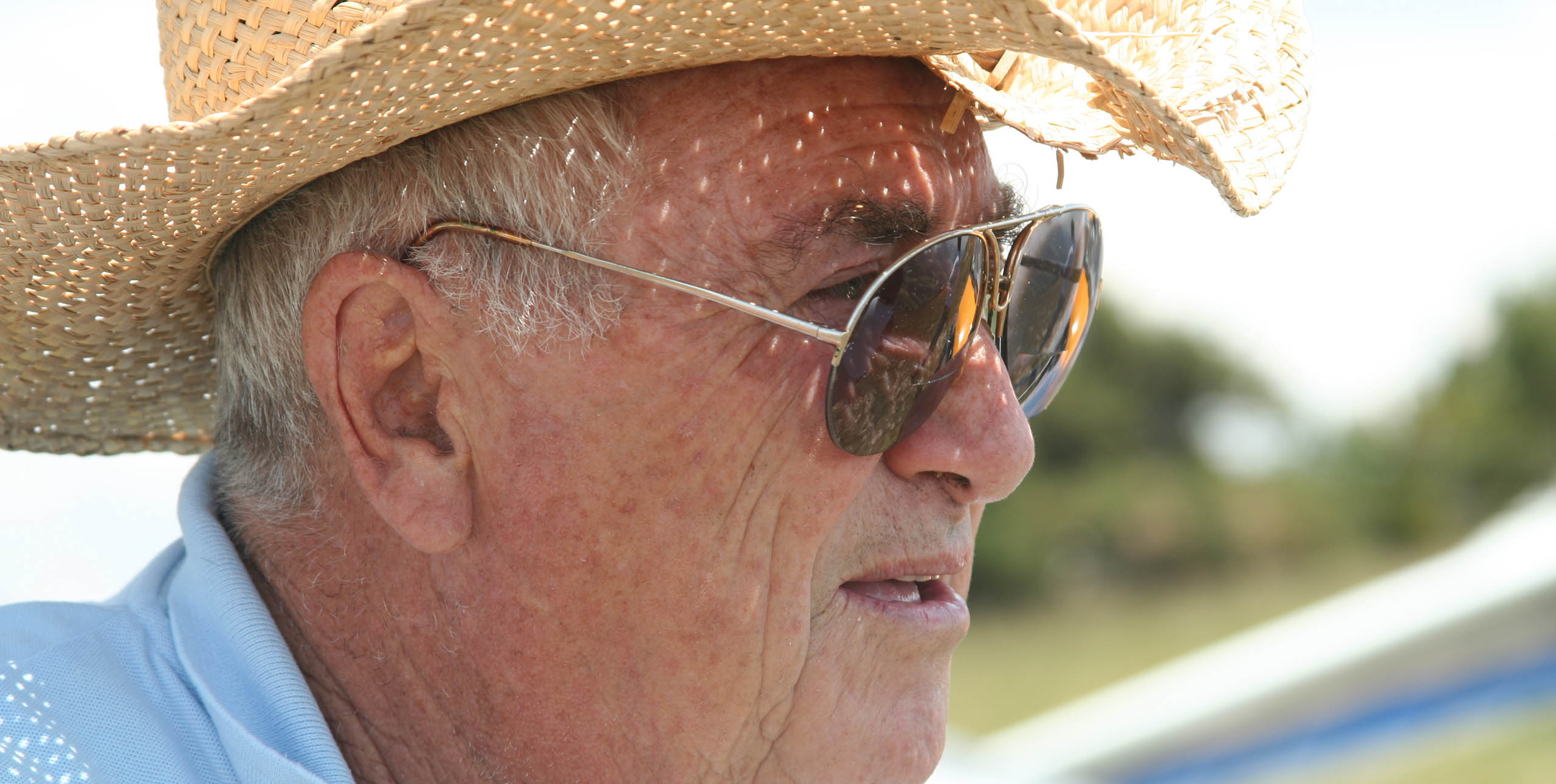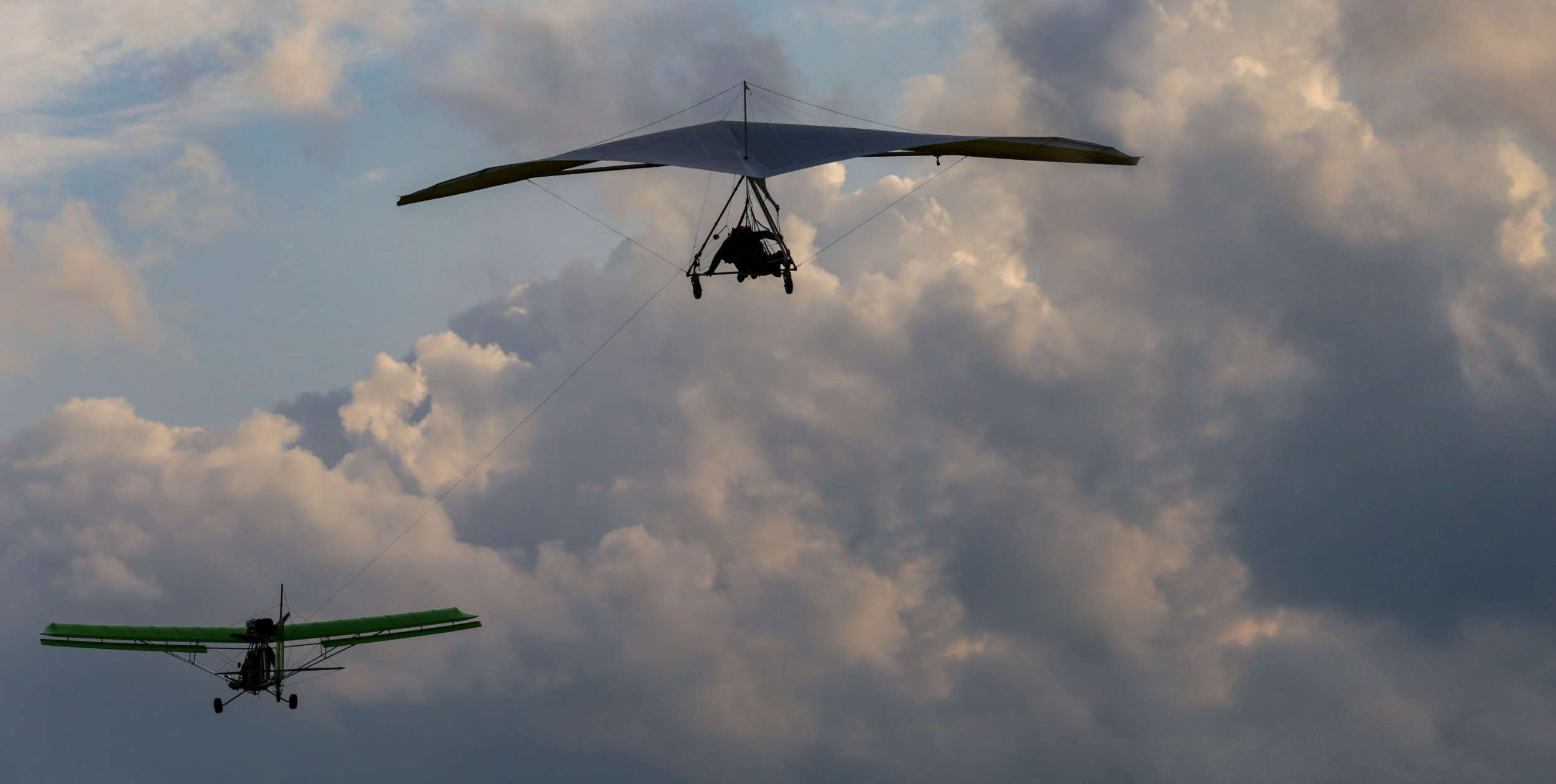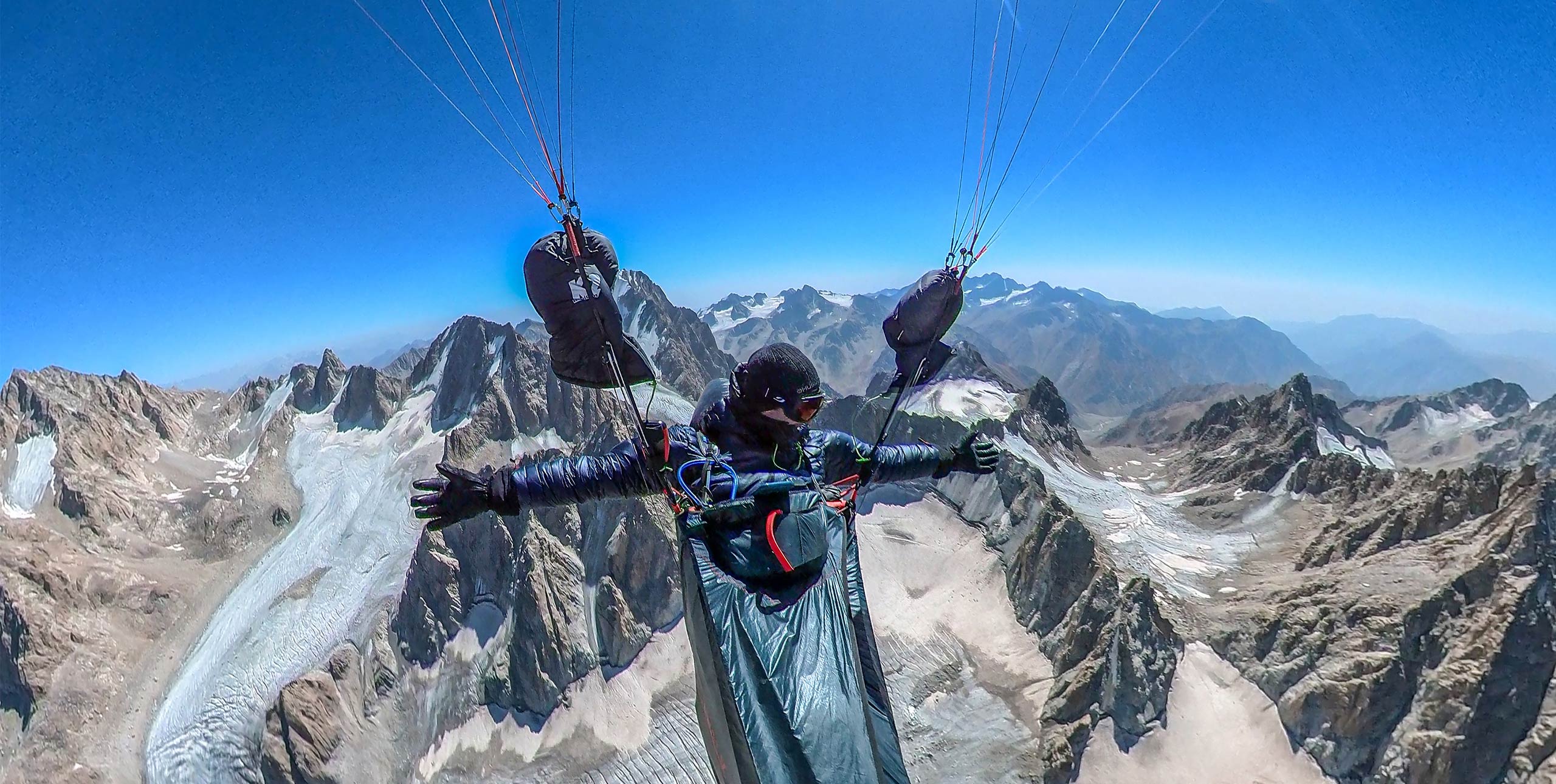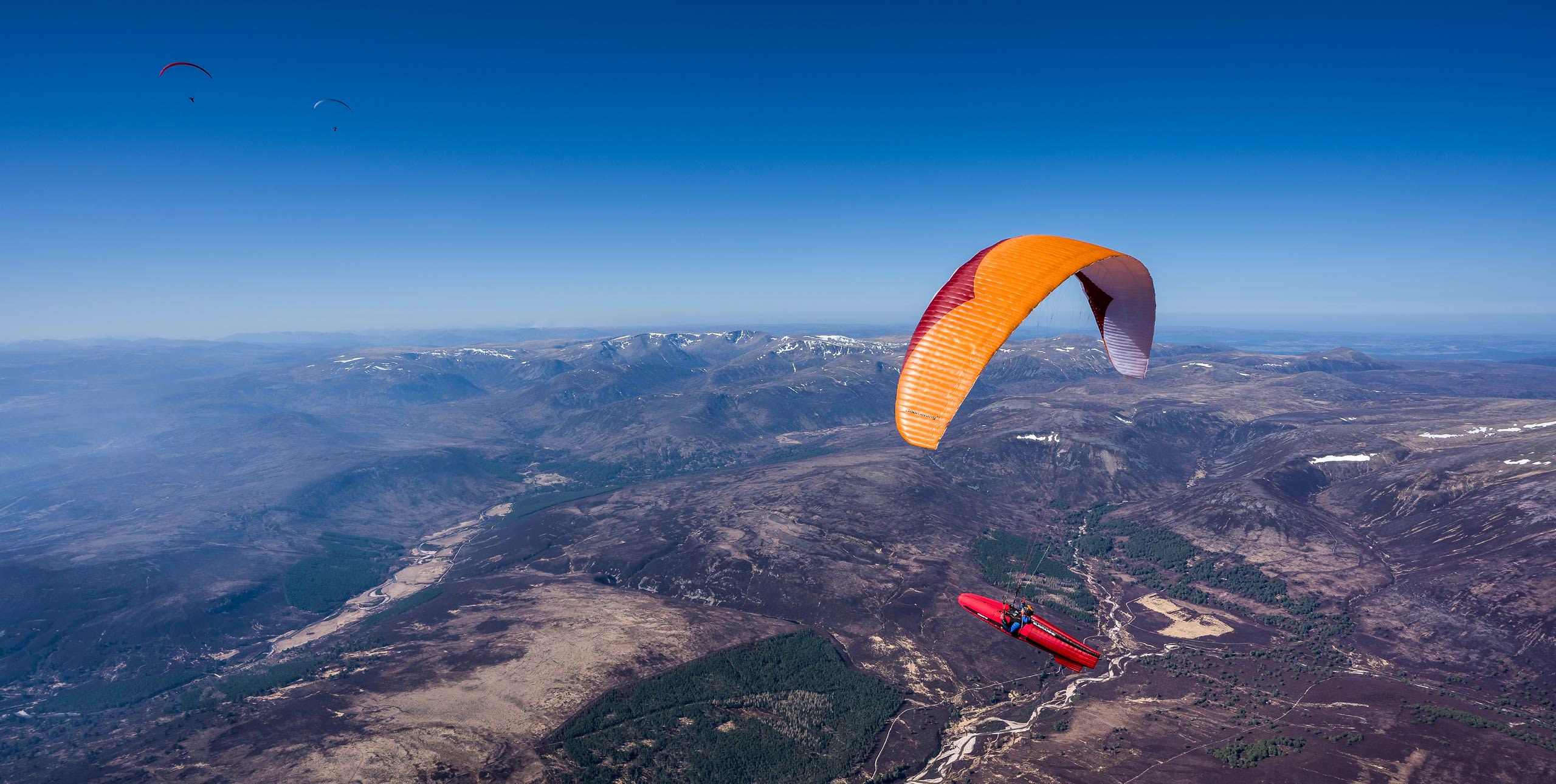American hang gliding legend Dennis Pagen tries out the latest Ukrainian rocket: the Aeros Stealth 3
Originally published in Cross Country magazine in May 2001
National preferences are curious things: The Americans pork out on Big Macs, the Brits lube down with fish and chips, the Germans fatten up on knockwurst whilst the French say “vive la différence!” as they turn their nose up at such common fare.
With hang glider preference we see similar, distinct, national affiliations: The Aussies are hooked on Moyes, the Brits are loyal to Avian and Solar Wings, the Germans like Bautek, the Yanks favour Wills Wing and the French have La Mouette. But there’s a company that seems to be more international than most, mainly because it has so little potential market at home. This hang glider manufacturer extraordinaire is Aeros of the Ukraine.
The extraordinary description is warranted because Aeros rose out of the economic ashes of the former Soviet Union to become a viable player on the world scene. They started with their early Stalker and continually refined the aerodynamics and hardware until they have created a world-class glider: the Stealth 3.
This glider is one of the most popular in the U.S. (which is arguably the world’s largest hang glider market) and deserves a look from every serious pilot. We gave it our personal scrutiny with loads of flying at a tow park and scores of comparisons in several meets. Here’s our report card.
THE STRUCTURAL APPOINTMENTS
Aeros now uses Dimension Polyant cloth and hardware that is familiar, including Finsterwalder fittings. The only place where they depart from the rest of the hang gliding world in construction details is in the tubing alloy. While most of the gliders now use 7075 aluminum (and formerly 6061), Aeros firmly prefers 2024 (D16T in their designation). This alloy has long been used for aviation purposes and possesses qualities of strength, stiffness and corrosion resistance that is midway between 7075 and 6061. Its price is more reasonable than 7075 as well. Perhaps the best asset of 2024 is that it doesn’t snap to produce wicked razor-sharp edges that readily slice through a sail if you break a leading edge. This factor can easily halve the cost of a repair job. Note however, that there have been reports of glider transportation damage (dents) which may be more common with this alloy.
Aeros’ factory support for replacement parts is gaining an admirable reputation. For one thing, they are often present at large competitions, and I have often seen the factory boys working on competitors’ gliders into the night. Also, they tend to ship quickly in Europe according to our experience. Finally, they have a completely stocked warehouse in the U.S., which specializes in shipping parts to the American continent..
THE NEW STEALTH 3
This year the new Stealth 3 features nearly everything that’s current in vogue in hang glider technology. Aeros has added 7075 battens with spring tensioning ends. The plastic ends are of less drag than most competing brands. Speaking of drag reduction, the new faired basetube is slicker than their previous offering. Even the round basetube has received thought with a special scratch-resistant electro-plate.
Other new items are the new sail cut (fewer wrinkles) and the adjustable sprogs (washout struts). Aeros claims the sail cut has improved performance and handling. The washout struts allow for adjustments for different weight pilots; a safety and handling related item.
The characteristic Aeros semi-square tips now sport carbon Hoerner-type fairings. The items keep a clean profile and reduce the throw weight of the glider. A final option that should attract is the carbon crossbar as a replacement for the unique aluminum laminate structure. The carbon spar reduces the weight by nearly 2 kg (4 lbs).
STEALTH 3 ERGONOMICS
Setup and breakdown on a Stealth 3 are nearly as easy as they can be. A PIP pin rigs the control bar, then there are nine curved and three straight battens per side plus the jointed tip battens and the tip fairings previously mentioned. Two arrangements make the setup slick.
First, the lower surface battens are gripped at the front by sewing the pockets tightly. It’s nice to know that at least some manufacturers are paying attention to what’s going on.
Secondly, the sprogs and washout tips are captured in a webbing that holds them with a mere closure of the zipper.
There is one drawback in comparison with the previous Stealth in that the inboard struts (sprogs) must be removed from their stud since they conflict with the crossbar fitting.
Pulling back the crossbar is medium hard (it requires all the strength of a 98 pound weakling), similar to other topless gliders. Overall, the Stealth 3 has one of the easiest setups of the current top gliders.
In passing, we’ll mention two construction details. First, the Stealth comes with plenty of pack-away pads. This feature will please the meticulous pilot. But it will frustrate the cross-country pilot flying the new slim-line harnesses with less storage room than a VW Golf glove box. Personally, I’m waiting for a glider designed with such thought that only tip bags and a pad at the end of the folded uprights is necessary.
Looking at takeoff and landing, there’s not much to say about the former. Like all gliders you point and shoot. The side cables are loose with the VG off, like all gliders, except the Fusion SP (Wills Wing) and the Golden Eagle (Speedwings) which is due to their use of a cam type VG, and the Twister (Bautek) which uses a tightening spring.
The Stealth 3 ties with the Litespeed as being the heaviest gliders I have recently tested (weighed on an accurate balance beam). As such, a flat, zero-wind launch requires more effort for the first few steps; I like to apply quite a bit of VG in such a situation.
Landing the Stealth 3 is easy and similar to the current Litespeed and Laminar ST. Two factors contribute to this desirable feature. All three of these gliders have a wide range of crossbar travel, which makes the sail a drum skin for fast flight, then bags it out considerably for docile handling and stall during landing. In addition, all three gliders have improved the roll dampening over previous designs, so roll oscillations are less likely. If you can land with any grace at all, you can land a Stealth 3.
The VG itself is easy to apply with three good pulls required from full off to full on. Again, this is similar to the two other gliders mentioned above. The Stealth 3 uses a pulley system in the upright and another above the keel. It seems that most manufacturers have solved the jamming or sticky VG problems. It’s only taken us 18 years.
FLYING PERFORMANCE
I like to include handling in with overall performance because it’s part of the thermalling formula. Aeros has gradually improved the Stealth’s maneuverability and this latest model rivals the other best handling high-performance gliders. One part of this solution is the use of a rocker arm hang point and the other is the afore-mentioned loose sail with the VG off.
The glider is easy to control in turbulence or while flying slowly. It is also reasonably easy to tow. I hit some cable-slackening turbulence on one tow that knocked me out of whack, but I could readily realign without oscillating.
The climb rate in a thermal is where I see the most improvement on the Stealth. Part of this may be the better handling (there’s a lot to be said for being able to stick it where you want it), part may be the new sail cut and part may be pure voodoo. But it works. Average Stealth 3 pilots are now showing up at the top of the pack. They better start putting their logo on the undersurface rather than the upper.
The Stealth has long had a reputation for copping an excellent maximum glide. This new offering is no exception as demonstrated in numerous competition tasks. In terms of high speed glide performance (diving to goal), the Stealth 3 is only rivaled by the Litespeed. Pilots report that its relatively flat airfoil helps it slice through thick, resistant air. Of course, this matter is again a function of wing loading, harness setup and technique.
SUMMARY
Aeros has produced a fine glider that will do any high performance enthusiast a good turn. Their exclusive access to an on-site wind tunnel no doubt aids their ability to produce world-quality gliders. A further benefit is the warm, cozy feeling you get knowing that you didn’t have to sell your firstborn’s birthright to own it. The glider is very reasonably priced as a consequence of Aeros’ local economy.
Naturally, we advise all pilots interested in moving in higher circles to test fly a glider before committing hard cash. When you climb aboard a Stealth 3 you can lighten your grip and get carried away with the power of performance.
SPECIFICATIONS
Surface area: 151 sq. ft.
Span: 34.5 ft
Aspect Ratio: 7.8:1
Nose angle: 128-130º
Pilot weight range: 154-253 lbs
Glider weight: 76/81 lbs
Minimum Sink Rate: 172 fpm
Ribs: 32
Double surface: 90%
Smaller sizes are available. Check out Aeros’ web site at: www.aeros.com.ua











